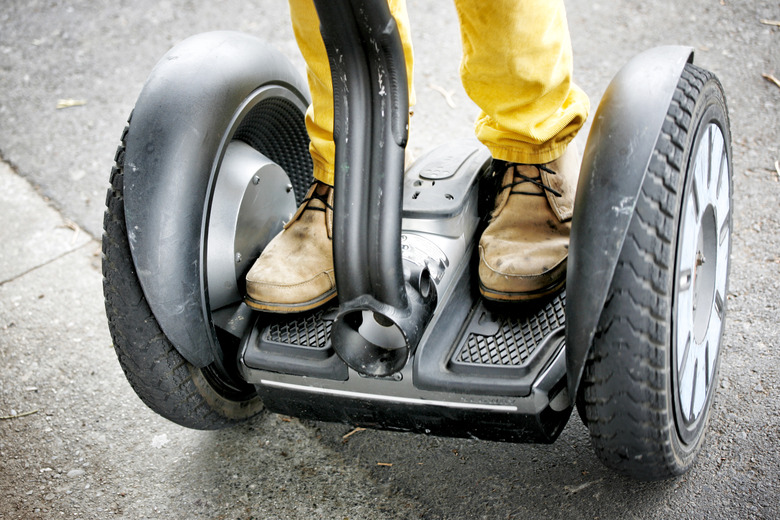The Segway Personal Transporter (PT) is an innovative, electric two-wheeled vehicle designed by Dean Kamen in Bedford, New Hampshire. Kamen’s original motivation was driven by a desire to replace walking as a mode of travel, particularly in urban areas. The system uses a patented gyroscopic mechanism that allows the user to stand vertically on the vehicle, while using the angular rate of the user’s body to “drive” the vehicle through its full range of movement.
Different Models
The Segway offers two versions: an I and an X model. The former is oriented to urbanized areas and is capable of handling smooth surfaces such as concrete and asphalt. The X model is primarily designed for rougher terrains, including grass, unimproved dirt trails and small rocks.
Power
The vehicle is battery powered. The power unit is based on a Saphion Lithium package developed by Valance Technology. The system is primarily designed and built for industrial purposes, while being oriented to long life and rapid recharging. The Saphion design also offers low maintenance; the system’s engineering approach is much safer than that of typical battery systems.
How It Works
Kamen refers to his vehicle as,”the world’s first self-balancing human transporter.” In order to move the system, the user simply leans forward or back, while leaning left or right to alter the direction of travel.
Types
Each model, I and the X, is operationally optimized based on the surface and how the unit will be used. For example, in the I family, there are the I2 (baseline unit), the I2 Commuter (integrated gear bag, comfort mats for longer treks, high reflectivity), the I2 Cargo (molded cargo cases on either side of the unit) and the I2 Golf (low-pressure tires and brackets for carrying a user’s golf bags). In the case of the X family, there are the X2 (baseline unit with wider track), the X2 Adventure (beefed-up frame) and the X2 Turf (wider track, beefed-up frame and low-pressure tires).
Segway Speeds
The Segway’s electric powerplant produces 2 horsepower (1500 watts) per servo–there are two servos. The system employs a software managed, self-governing algorithm that causes the vehicle to automatically “tilt backward” when the vehicle is about to exceed any version’s maximum speed of 12.5 mph.

